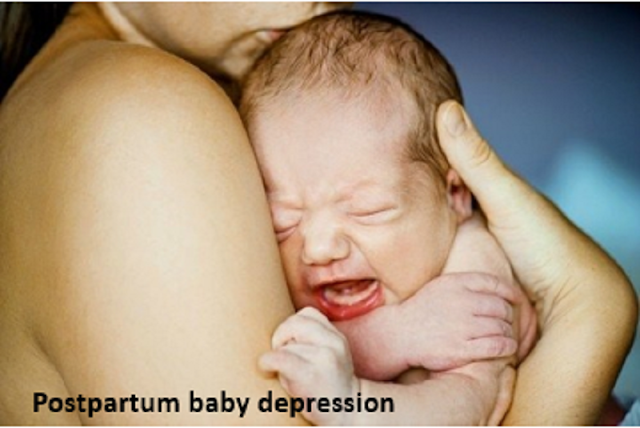Review Of Neurophysiological ( nervous system) Children With Autism Part 1
 |
| nervous system |
The nervous system is a system that regulates feelings, ways of thinking and
controlling our bodies. The nervous system is divided into 2 systems, namely:
the central nervous system and the peripheral nervous system.
The
central nervous system consists of
a) The brain, is the main integration area of
the nervous system, namely as a place of storage of memory, the occurrence of
thought, emotional regulation, and other functions associated with psychology
and body control.
b) Spinal cord which functions as a place
of transfer to and from the brain, an integrated area for coordination of many
subconscious nerve activities, such as reflexes pulling parts of the body away
from painful stimulation.
The
peripheral nervous system consists of
a) Afferent fibers: to deliver sorrel
information to the central nervous system,
b) Efferent fibers: to deliver motor
signals originating from the central nervous
system. Nerves spread throughout the body to regulate all body activities.
Based on the type of activity carried out, the
nerves are divided into 2 namely
1) Syndrome nerves: to regulate movements that
are in accordance with our wishes, for example moving hands, stepping foot,
etc.
2) Vegative nerves (autonomic nerves): to
regulate subconscious movements such as heart rate, bowel movements, and
others.
 Autonomic nerves consist of sympathetic and
parasympathetic nerves whose work is opposite. Sympathetic nerves have a
activating nature while the parasympathetic nerves are reduced in activity.
This is related to regulation in the body to stabilize excessive and less
active organ work.
Autonomic nerves consist of sympathetic and
parasympathetic nerves whose work is opposite. Sympathetic nerves have a
activating nature while the parasympathetic nerves are reduced in activity.
This is related to regulation in the body to stabilize excessive and less
active organ work.
Nerves are composed of nerve cells called
neurons. In the central nervous system,
information is sent through a series of neurons in nerve impulses, in the form
of electrical conduct. The relationship between one neuron and another is
called the synapse.
Functional Pattern of the Nervous System. The main function of the nervous system is to regulate the activities of the body, especially
the muscles, as a center for regulating emotions, etc. To carry out this
diverse task, based on its function.
The nervous system is divided into 3 parts
1) Sensory section. The sensory part works
through the senses of sight, hearing, smell, taste, and touch. Sensory parts
deliver information and stimuli from all surfaces and structures in the body
into the nervous system through the spinal nerves and cranial nerves. The
signals are then transmitted to almost all other parts of the nervous system that will analyze and
process the sensory information.
2) Motor function. Controlling bodily
activities, including controlling contraction of all body muscles, smooth
muscles and tools in the body as well as the secretion of exocrine and
endocrine glands. Motor function is carried out by carrying information (nerve
signals) from the central nervous system
to the motor parts throughout the body.
3) Integration function. Processing information
to determine the body's proper motor activities and to abstract abstract
thinking. Some areas in the brain handle information storage called memory,
while other areas assess sensory information to determine consideration so that
the right motoric answers to information are obtained in the form of sensory
stimuli. When a decision is made, the signal is delivered to the motor center
to cause motor movement. As an executor of motor movements are the muscles of
the body that will make movements.
Related article:

Neurophysiological studies. Various types of
neuropathological conditions (nervous
system abnormalities) are thought to be the cause of autism. Some
researchers have revealed that certain areas of the brain of autism have
dysfunction (impaired function). This assumption is reinforced by the
similarity between the behavior of autistic children and adults who experience
brain lesions (wounds in the brain).
Brain dysfunction occurs in several parts, such as the mesocortex (including the temporal lobe, frontal lobe and neostriatum), a sensory processing system that regulates directed attention (including the brain stem and diensefalon structure), cerebellum, and other parts of the brain.
Autopsy studies in autistic adults show cellular changes in the amygdala and hippocampus (part of the limbic system that regulates behavior), ie structures located in the temporal lobe. Neurons in the hippocampus are 1/3 smaller in size and are more and more numerous. meeting.
Brain dysfunction occurs in several parts, such as the mesocortex (including the temporal lobe, frontal lobe and neostriatum), a sensory processing system that regulates directed attention (including the brain stem and diensefalon structure), cerebellum, and other parts of the brain.
Autopsy studies in autistic adults show cellular changes in the amygdala and hippocampus (part of the limbic system that regulates behavior), ie structures located in the temporal lobe. Neurons in the hippocampus are 1/3 smaller in size and are more and more numerous. meeting.
Thus a brief article from us, regarding the
Review of Neurophysiological (nervous
system) Autistic Children Part 1,
which we will discuss later in the article Autistic
Neurophysiological (nervous system) Part
2, see the article from us and hopefully it will be useful.


Comments
Post a Comment